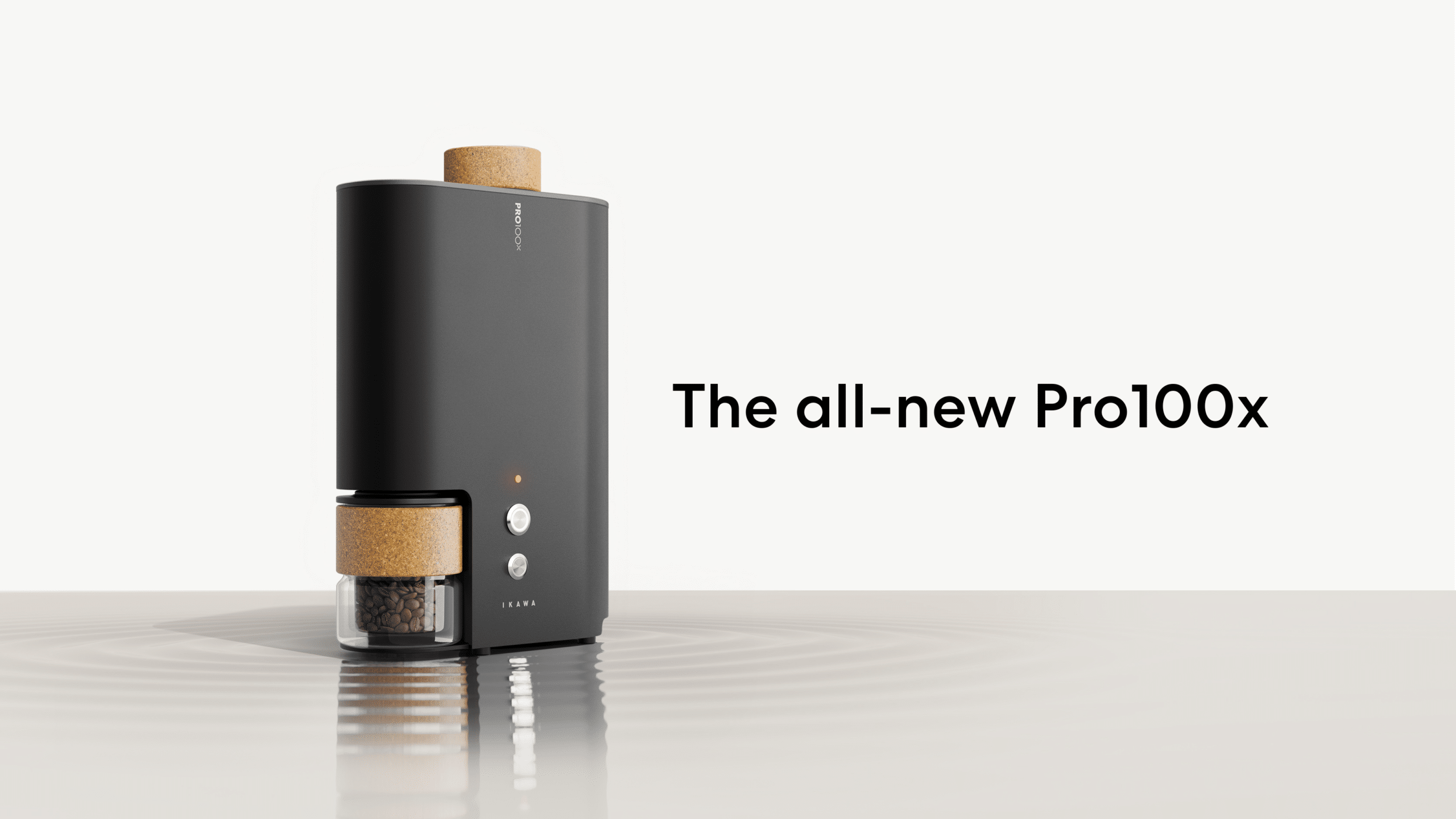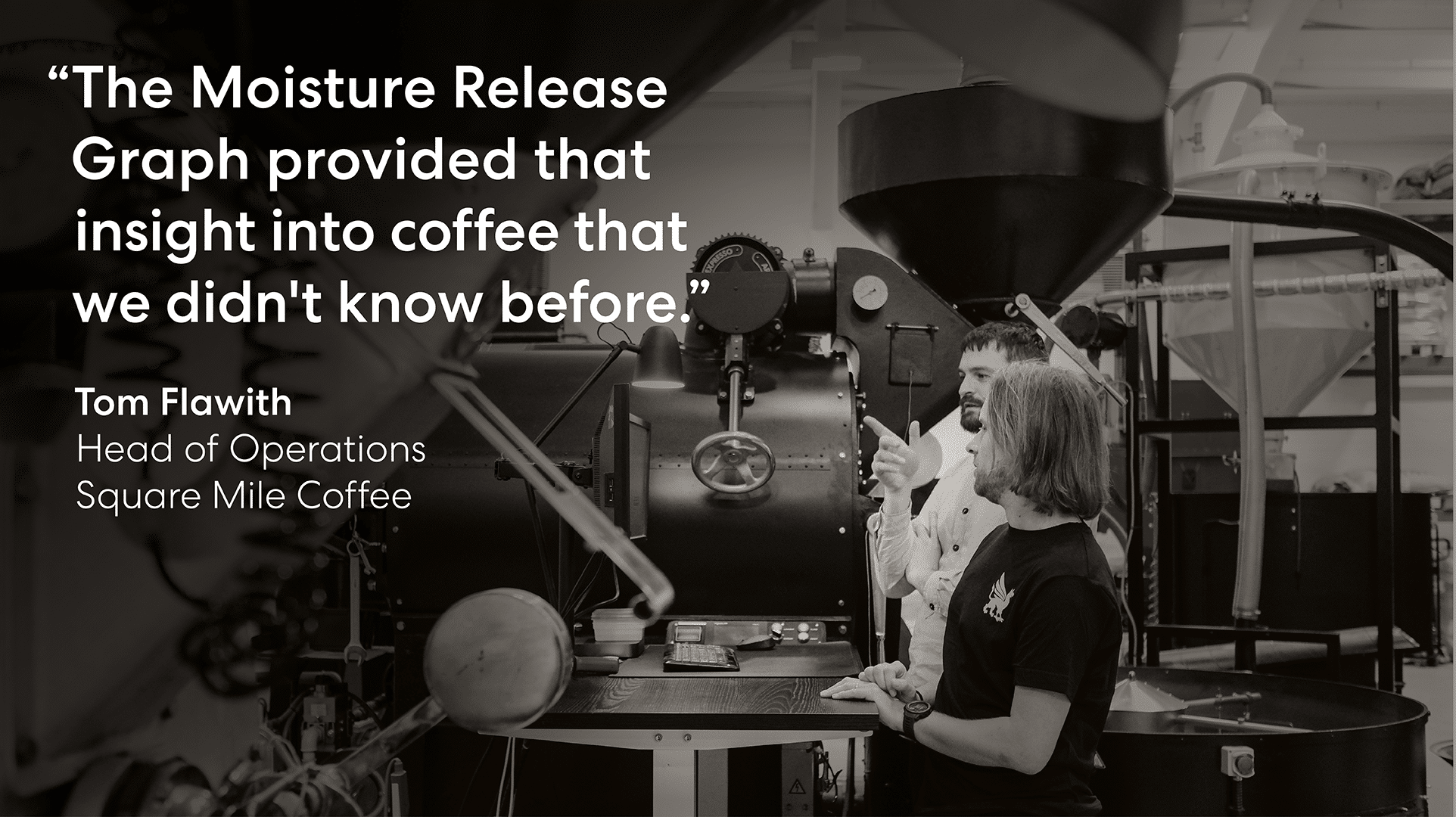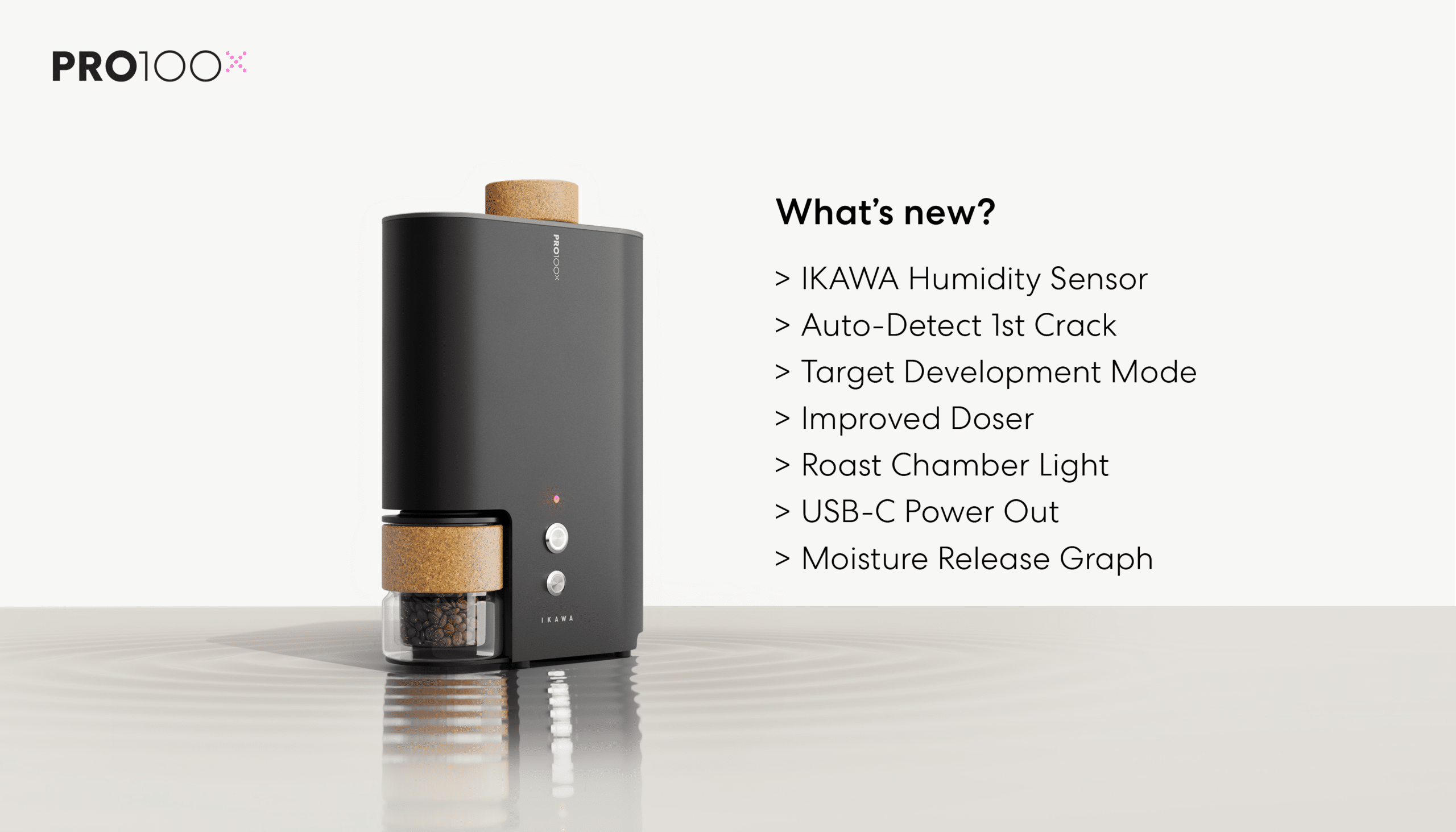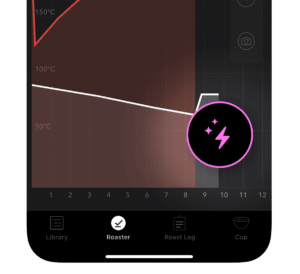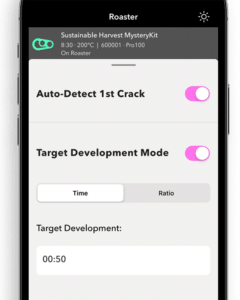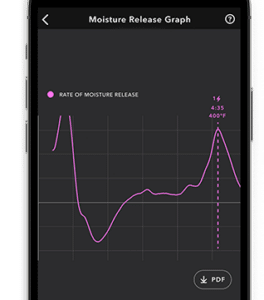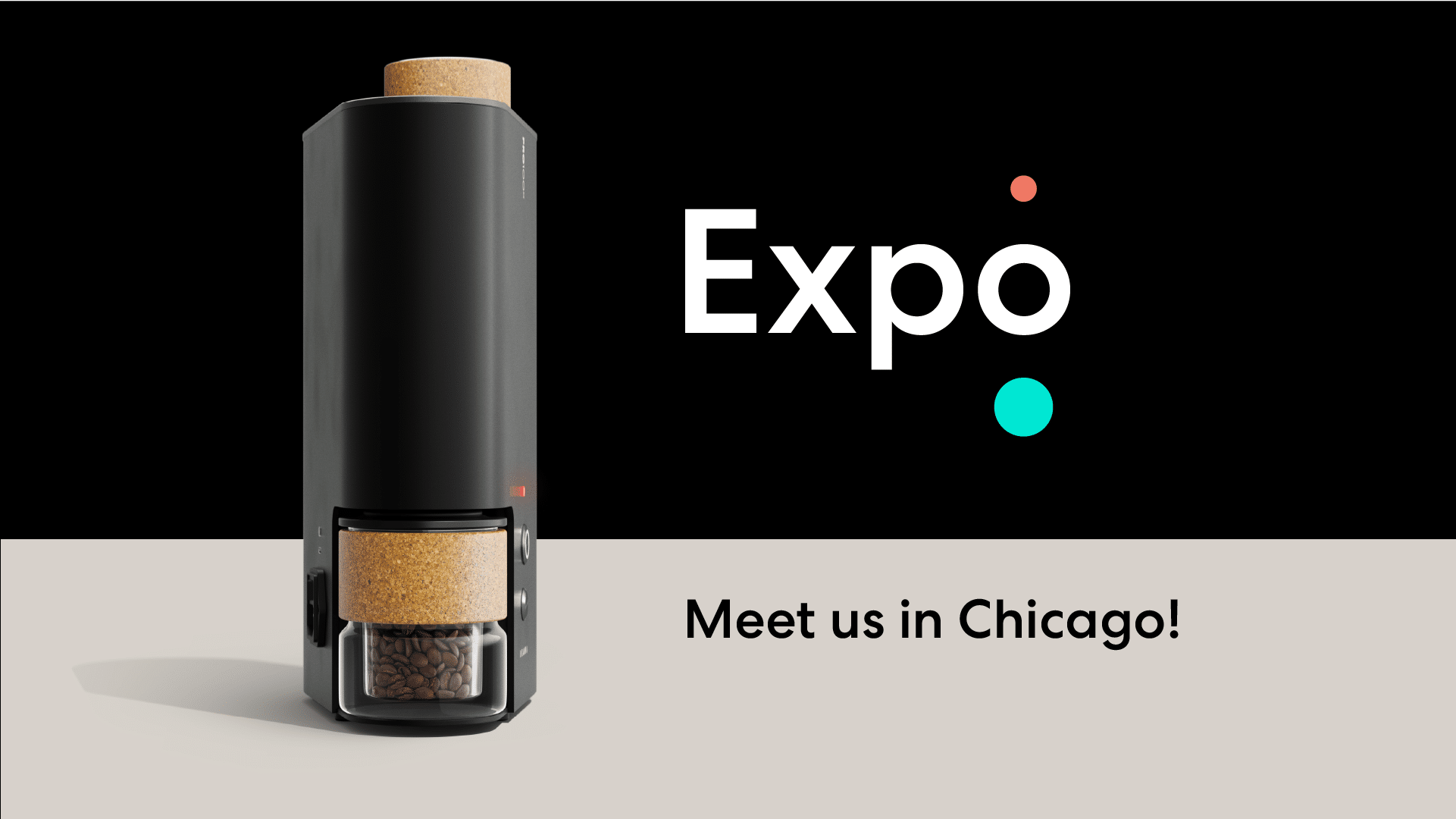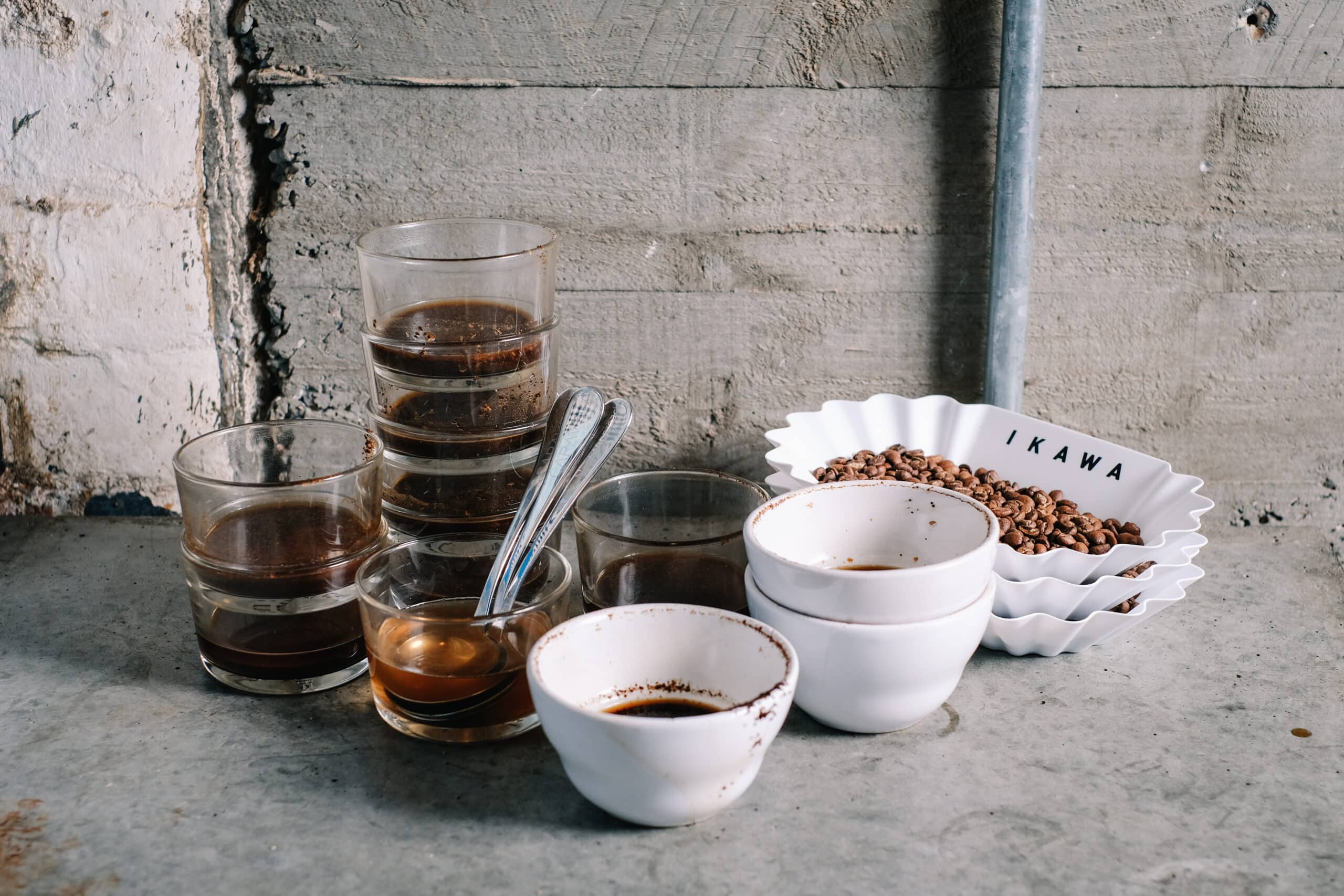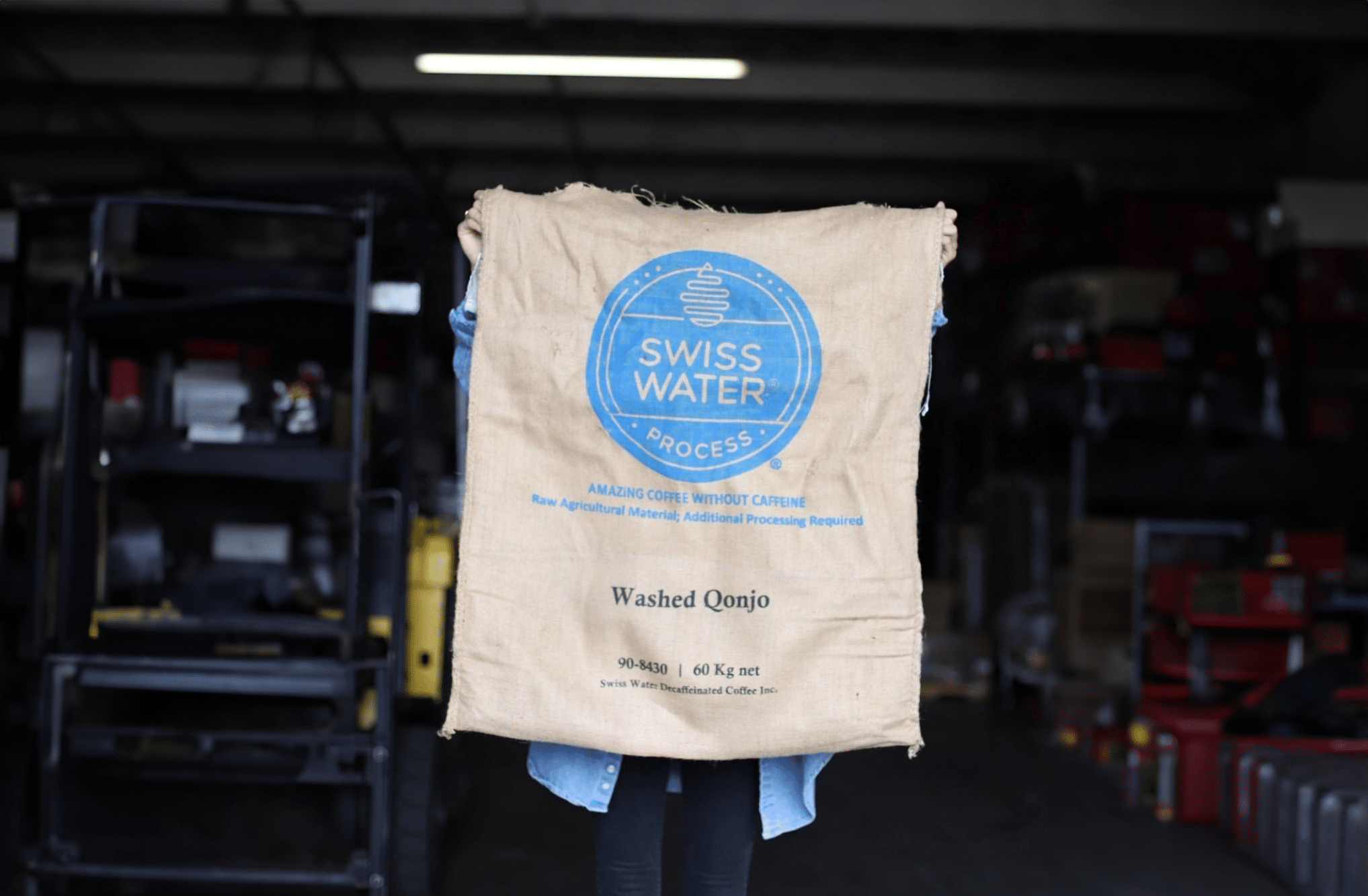While we experimented with other methods, the absolute best method for identifying 1st crack automatically was by measuring the change in humidity in the roasting chamber.
This was objective, reliable, and less susceptible to environmental impacts (sounds in the room for example) than other methods.
By using the IKAWA Humidity Sensor data we can find the point of Peak Rate of Moisture Release, which has shown to correspond to audible 1st crack in almost every case.
This 1st crack detection measures what is happening with the beans directly.
Rob Hoos first gave our founder, Andrew Stordy, the idea to investigate humidity for 1st crack. Andrew set out to learn more about this, and found the helpful article by James Davison of Williamstown Roasters. Andrew quickly prototyped an idea and began the process of trial and error with various sensors and software.
Testing continued and Tom Flawith and James Haydon of Square Mile Coffee Roasters contributed months of time and expert insight into helping us validate and fine tune the custom algorithm needed to intelligently detect 1st crack.
After more than 40 different coffees and many many roasts, the resulting Auto-Detect 1st Crack system is reliably marking 1st crack, and corresponds within a few seconds of an audible crack.
“An” audible 1st crack is noteworthy because one piece of feedback from Square Mile was the roaster has better insight into 1st crack, and so those times when there are slow and spaced out pops they were happy to defer to the Pro100x. So much so, that they now say that it can mark 1st crack as good as anyone in the roastery.

